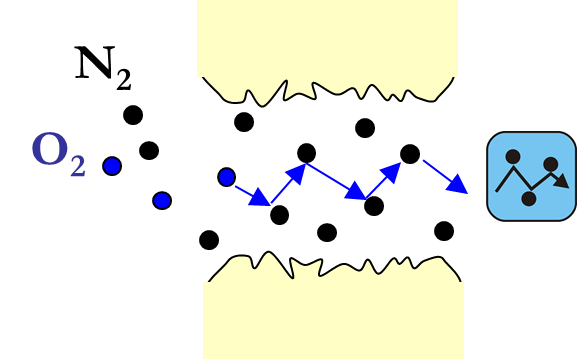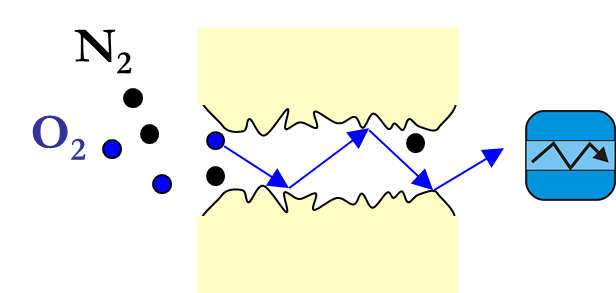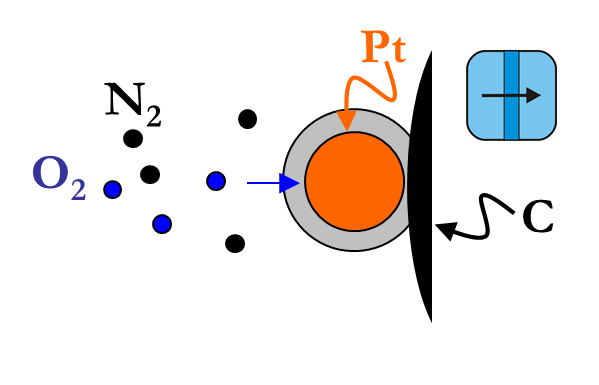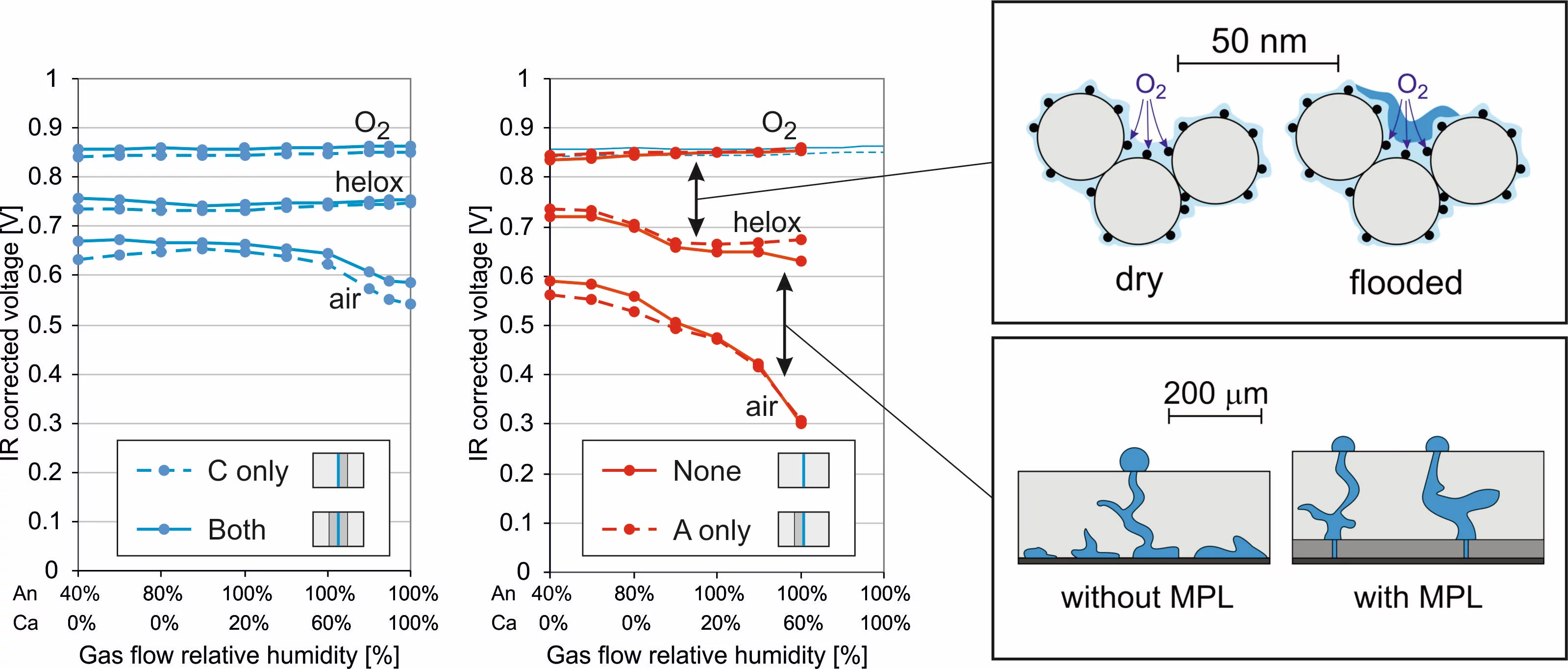Introduction
Mass transport losses represent a significant limitation for the maximal reachable power density of polymer electrolyte fuel cells (PEFCs). The ability to measure them, in order to minimize them, is of high interest for the design of the structure of fuel cell components. Helox/oxygen voltage gain measurement is a known method to evaluate these losses, though its classical application suffers from measurement artifacts due to the different physical properties of helox (a mixture of helium and oxygen) and air in terms of water management, and due to the oxidation of the catalyst surface following extended operation with pure oxygen. Our Pulse Gas Analysis (PGA) method [1] solves both issues by operating the cell most of the time with air on the cathode and using short periods of operation (typically 1 second) with helox or oxygen. An optimized in house developed fuel cell test stand ensures a fast, seamless switching between the gases.
| Appears in | |||||
|---|---|---|---|---|---|
| GDL | MPL | CL | |||
 |
Bulk diffusion is the dominating diffusion mode in pores much larger than the mean free path of the gas molecules (~50 nm). The oxygen transport is limited by collisions with nitrogen molecules. | x | x | x | Helox gain |
 |
Knudsen diffusion is the dominating diffusion mode in pores much smaller than the mean free path of the gas molecules. The oxygen transport is limited by collisions with the material structure. | x | x | Oxygen gain | |
 |
Thin film diffusion is represents the transport of oxygen to catalyst particles not having a direct contact to the gas phase, by diffusion through the ionomer material of through water. | x | Oxygen gain | ||
-
Oberholzer P, Boillat P, Siegrist R, Kästner A, Lehmann EH, Scherer GG, et al.
Simultaneous neutron imaging of six operating PEFCs: experimental set-up and study of the MPL effect
Electrochemistry Communications. 2012; 20(1): 67-70. https://doi.org/10.1016/j.elecom.2012.03.038
DORA PSI
[1]
-
Oberholzer P, Boillat P, Siegrist R, Kästner A, Lehmann EH, Scherer GG, et al.
Simultaneous neutron imaging of six operating PEFCs: experimental set-up and study of the MPL effect
Electrochemistry Communications. 2012; 20(1): 67-70. https://doi.org/10.1016/j.elecom.2012.03.038
DORA PSI
Interested in using our PGA setup ? Contact us.
Contact
Dr. Pierre Boillat
Electrochemistry Laboratory (LEC) and
Neutron Imaging and Activation Group (NIAG)
5232 Villigen PSI
Switzerland
Telephone: +41 56 310 2743
Fax +41 56 310 4415
Email: pierre.boillat@psi.ch

